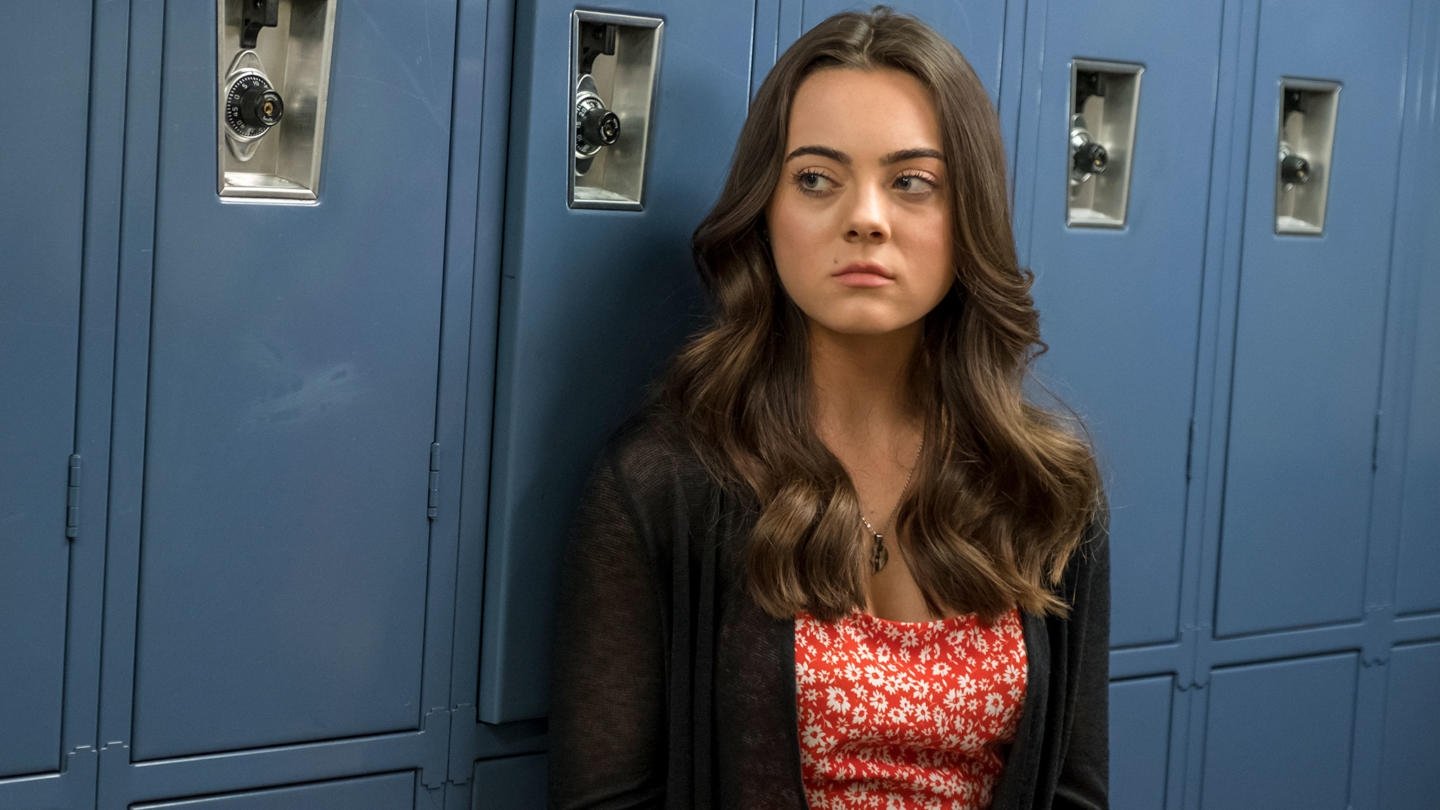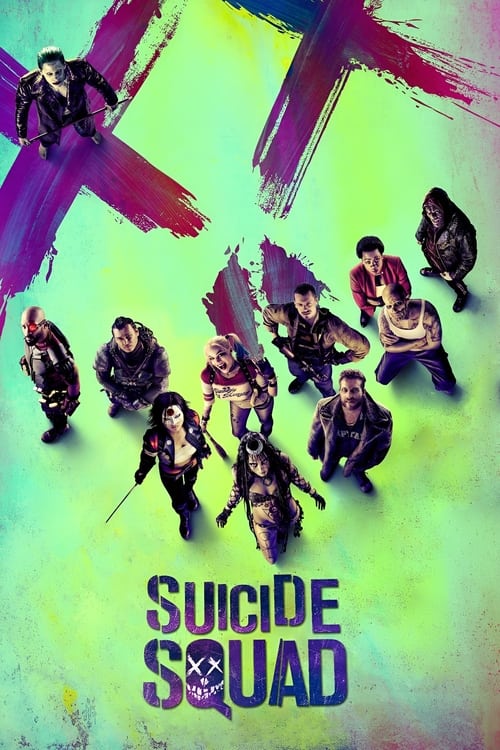
2019
Most Likely to Murder
Thriller, TV Movie
6.0
User Score
24 Votes
Status
Released
Language
en
Budget
$0
Production
Headlong Entertainment, Benattar/Thomas Productions
Overview
A troubled teen uses her newfound friendship with two popular cheerleaders to become the school’s “Most Inspirational” student by any means necessary.
Review
Temlakos
2.0
_Most Likely to Murder_ disappoints on several levels. The major craft flaw--plot holes big enough to drive an SUV through--is a symptom of the basic content flaw. Which is: this film sends the message that bullies know what they're doing, and that you should stay out of their quarrels with their targets, because those quarrels are worse than none of your business. In fact, here the bullies are looking out for the safety of the community!
**SPOILER ALERT:** this review will necessarily spoil the Big Reveal at the end, the one thing that makes sense of the anti-heroine's behavior. Anyone wishing to view the film first should read no further than this line.
If you've gotten this far, you know the overview. Casey Paulson was at the top of a girl's "Junior High" game. (That's odd; haven't they been calling it "Middle School" and expanding it from Grades 7-8 to 5-8 for the last twenty years or longer? But I digress.) Then, early in high school, she has it all: she's even a cheerleader, the top of the girls' social order in any school. Then, as we are supposed to believe, tragedy strikes. Fire breaks out in her home, kills her father, and burns her hair down to her scalp.
Fast-forward to the present day. She's coming back to school, wearing a wig. But two cheerleaders take her wig off and throw it in the toilet, as spiteful revenge for some seemingly petty slight that predated the fire. And when she shows up for class, wearing a wig that still smells a little rank, they start joking about that in class. Then at recess the cheer captain lays down the law on the bullies: stop, or you're off the squad. Another cheerleader decides to befriend Casey and bring her out of her shell.
That's not good enough for the bullies. They steal Casey's cellphone, lock it up in one of their lockers, and deliver an ultimatum: stay away from the girl who wanted to be her friend. So she does two things, one of which you can approve, the other, not so much. The good thing is that she smashes the lock on the locker where the thief-in-charge has put the cellphone, and takes her property back--without disturbing anything else. But then, at a critical moment when the squad is practicing a pyramid maneuver, Casey pulls the fire alarm. The distraction causes the pyramid to break--and the thief-in-chief falls and breaks her leg.
The school counselor investigates--but not too closely. Casey, of course, denies everything--after all, no witnesses.
But the other bully, who took part in the theft, won't let that go. So when Casey delivers a speech to let everybody know how important fire safety can be, this other girl records it on video and threatens to post it on-line. Excuse me? If she just delivered that speech for the class, why does she not say, "Do your worst, if you really think I don't want that to go viral; I will admit nothing, and not do your bidding." Instead Casey anonymously rats the girl out--falsely--for taking drugs, resulting in her expulsion. Naturally the girl attacks Casey in her yard at home--whereupon Casey cracks the girl's skull with a baseball bat.
Self-defense, right? Wrong. Evidently Casey does not want the police to investigate too closely--something about the true cause of the original fire. So she and a neighbor boy _bury the girl in a local park._
In the meantime, the girl with the broken leg now tells Casey's well-meaning friend that she has "created a monster." And everything comes to a head when Casey wins the "Most Inspiring Student" award. Here is the Big Reveal: _Casey started the original fire._ She had gone to counseling for "anger issues," and the counselor received a police report casting suspicion on Casey. Why did she burn her own house down? Because her father had been abusing her and her mother both. But the neighbor boy confessed to starting the fire out of carelessness. Investigation dropped.
In the end, the friend brings Casey down at her moment of triumph, because she recorded Casey's confession without Casey knowing about it. And the slight that the cellphone thief had complained about? Turned out to be a real and serious injury--of what kind, the narrative never explains.
The plot holes should be obvious to anyone, even ignoring how the video of the confession could be that good while Casey is knocking out the girl making it, and tying her to a chair. Why didn't the counselor figure out that child abuse was going on? Why didn't Casey's mother say anything to the police? Why were the arson squad so quick to believe that other boy's confession? Are arson investigators really that sloppy?
Why did the two cheerleaders decide to take matters into their own hands? If they thought someone ought to look a little more closely into Casey's role in the fire, why didn't they speak up before Casey returned to school? And if someone has done you dirty, you don't pull a stupid stunt like dunking her wig in the toilet. That makes you just as bad as she is.
Of course, the girl who broke her leg couldn't admit to robbing Casey of her cellphone before the incident. But who failed to check the girl's locker and verify that, broken lock or no, nothing was missing? Why did the other girl, facing expulsion, not lay her beef before her attorney? Are we to believe she never got one?
And Casey burying the girl was the most stupid thing she did in the whole movie. The neighbor boy told her: self-defense! He could testify! (In fact the other girl had both hands around Casey's throat when Casey grabbed the bat she had brought, to investigate a noise, and whacked the girl upside the head with it.) She had so smoothly dealt with the initial suspicions after the leg-break incident. Now suddenly she is burying a body in a park? That's nothing but a boatload of fertilizer.
But the most stunning idea in this whole film is that it placed _bullies in the right._ That is something one should never do. Furthermore, it suggests that bullies serve a vital function for community protection and social-order maintenance. When they do that, they destroy any moral authority anyone has to bring the target of the bullying to book. One vital fact stands out: never, until the very end, did Casey strike out at an innocent person. And even at the end, she didn't kill the one who had befriended her.
The film ends, as most Lifetime/Reel One/Mar Vista/et al. films tend to do, with Casey in the reformatory, accepting a roommate. If that reformatory suddenly sees the emergence of an all-girl vigilance committee among the inmates, the authorities will have none to blame but themselves. And if this film causes someone to imitate Casey, the filmmakers will have none to blame but _them_selves for _that._
Read More 



